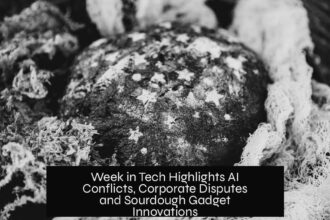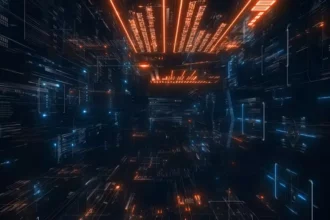Table of Contents
ToggleUK Judge Warns of Risk to Justice After Lawyers Cite Fake AI-Generated Cases in Court
Lawyers in England have cited fabricated cases generated by artificial intelligence in court, prompting a High Court judge to warn about potential risks to the justice system. The judge emphasized that attorneys could face prosecution if they fail to verify the authenticity of their legal research.
Misuse of AI in Court Proceedings
In recent court proceedings, artificial intelligence tools have been misused to create fictitious case law. Lawyers cited these AI-generated fake cases as precedents, despite their nonexistence. This misuse challenges the integrity of legal processes and threatens public trust in the judiciary.
High Court Justice Victoria Sharp highlighted the severity of this issue, stating it carries “serious implications for the administration of justice and public confidence in the justice system.” Lower court judges also raised concerns about lawyers deploying generative AI tools to draft legal arguments or witness statements that go unchecked. This leads to false information being presented to judges, undermining the reliability of court decisions.
Specific Cases Illustrating AI Misuse
Qatar National Bank Lawsuit
A high-value case involving a £90 million ($120 million) lawsuit concerning an alleged financing agreement breach with Qatar National Bank exposed the problem clearly. A lawyer cited 18 non-existent cases in legal arguments presented before the court.
The client, Hamad Al-Haroun, apologized for unintentionally misleading the court with false details generated by publicly available AI tools. He accepted responsibility rather than his solicitor, Abid Hussain, for the inaccuracies. Justice Sharp expressed concern over this reversal of responsibility, calling it “extraordinary that the lawyer was relying on the client for the accuracy of their legal research, rather than the other way around.”
Tenant’s Housing Claim Against London Borough of Haringey
In a separate incident, a lawyer cited five fake cases to support a tenant’s housing claim. Barrister Sarah Forey denied using AI, but Justice Sharp noted she failed to provide a coherent explanation for the presence of fabricated cases. This incident further highlights the risks of unchecked AI-generated content in legal submissions.
Consequences and Regulatory Actions
The judges referred the lawyers involved in both cases to their respective professional regulators. However, they refrained from imposing more severe penalties at this stage.
Justice Sharp outlined possible legal repercussions for knowingly submitting false material. Such acts could amount to contempt of court or, in extreme cases, perverting the course of justice. Notably, perverting the course of justice carries a maximum penalty of life imprisonment in the United Kingdom.
Judicial Perspective on AI in Legal Practice
While warning of the dangers, Justice Sharp acknowledged AI’s potential as a “powerful technology” and a “useful tool” for legal work. AI can expedite legal research and assist in drafting documents if used properly.
Nevertheless, the judge emphasized the need for proper oversight and regulation. She stated, “Artificial intelligence is a tool that carries with it risks as well as opportunities.” It must be integrated into legal processes under frameworks that ensure compliance with professional ethics and standards. This approach is essential to maintain public confidence in the administration of justice.
Key Takeaways
- Lawyers in the UK have cited fake AI-generated cases in courts, risking the integrity of legal proceedings.
- High Court Justice Victoria Sharp warns misuse of AI threatens justice and public confidence.
- In notable cases, fabricated precedents influenced high-profile lawsuits and housing claims.
- The legal profession faces potential prosecutions for submitting false materials under court rules.
- AI is a valuable tool but requires strict oversight and adherence to ethical standards.
- Regulatory bodies are involved following incidents but severe penalties are reserved for extreme cases.
UK Judge Warns of Risk to Justice After Lawyers Cited Fake AI-Generated Cases in Court
Yes, lawyers in the UK have cited fake cases generated by AI in court, risking both justice and public trust. This startling revelation comes from High Court Justice Victoria Sharp, who warns that failing to verify legal research sourced through AI could land attorneys in serious trouble — even prosecution. The problem isn’t just a glitch; it threatens to unravel confidence in the entire justice system.
Picture this: you’re in court, fighting for justice, and suddenly the opposing counsel drops references to cases so obscure they might as well be from another planet. Turns out, those “cases” don’t exist. They’re artificial intelligence’s version of legal fiction, inadvertently—or worse, carelessly—slipped into official proceedings.
This isn’t a paranoid fear. It’s based on real situations where lawyers presented AI-generated false cases. Sharp flags this not just as careless research but a threat to the integrity of court decisions.
Where Did These Fake Cases Pop Up?
One glaring example involves a high-stakes lawsuit worth £90 million (around $120 million) over a financing dispute linked to the Qatar National Bank. In this case, one lawyer cited 18 cases that didn’t exist—fabricated entirely by AI tools.
Interestingly, the client, Hamad Al-Haroun, stepped up and apologized for unintentionally misleading the court. He accepted responsibility for the false information generated by publicly available AI tools. The lawyer, Abid Hussain, apparently relied on his client’s research rather than doing his due diligence, which the judge called “extraordinary.” Imagine trusting your client’s word on legal research over your own professional responsibility—quite the plot twist in legal ethics!
Another case involved a tenant’s housing claim against the London Borough of Haringey. A lawyer had cited five fake cases here, too. Although barrister Sarah Forey denied using AI, the judge remarked she didn’t offer a clear explanation of what happened. This vague response amplifies worries about undisclosed AI misuse.
Why Does This Matter So Much?
Legal proceedings depend on truth and verified facts. When fake cases enter the courtroom, they create a slippery slope. Judges, opposing counsel, and clients might be misled; decisions could be unfair or wrong.
Justice Sharp highlights the problem with blunt precision: “The misuse of AI has serious implications for the administration of justice and public confidence in the justice system.” And let’s be clear—once confidence is shaken, it’s an uphill battle restoring it.
What Happens to These Lawyers?
The judges referred the lawyers involved to their professional regulators. However, there were no immediate harsher penalties, like disbarment or criminal charges.
Still, Sharp didn’t mince words about potential consequences. Submitting fake material as genuine evidence could be contempt of court or, in the worst cases, perverting the course of justice. That crime can carry a life sentence. Life behind bars just for trusting AI too much? It sounds harsh, but the justice system must deter malpractice to maintain order.
Is AI the Villain or a Helpful Sidekick?
Here’s the twist: AI itself isn’t inherently bad. In fact, Justice Sharp acknowledges it as a “powerful technology” and a “useful tool” for legal work. This isn’t about banning smartphone apps or shutting down legal tech. It’s about managing risks.
The judge stresses the importance of oversight and a strict regulatory framework. AI must operate within professional and ethical boundaries. Without guardrails, even the best tools can cause disasters.
Think of it like driving a powerful sports car. The car’s amazing, but if you speed recklessly without obeying traffic laws, you risk serious accidents. Similarly, AI must be harnessed wisely, ensuring that human lawyers double-check outputs, verify sources, and take full responsibility.
What Can Lawyers and the Justice System Do?
- Implement rigorous AI verification: Lawyers should always cross-check AI-generated research before using it in court.
- Set clear ethical guidelines: Bar associations and regulators need to mandate transparency regarding AI use.
- Enhance training: Legal professionals must get educated about AI tools’ limits and risks.
- Develop regulatory frameworks: Courts should create protocols that track AI involvement in case preparation.
Justice professionals face a choice: embrace AI as a helpful assistant or allow it to become a wolf in sheep’s clothing. Could courts establish a “legal AI certification” to guarantee reliability? That could become a new frontier.
Closing Thoughts
When lawyers botch legal research by blindly trusting AI, the whole justice system teeters. The consequences stretch beyond courtroom drama—public trust erodes, real victims suffer, and legal outcomes risk being skewed by fiction masquerading as fact. But AI, wielded responsibly, can sharpen legal work and improve efficiency.
So here’s a thought to leave you with: as AI tools evolve, should courts require all parties to disclose AI use explicitly? Mandatory transparency might clear the air and reduce errors drastically. After all, justice thrives on truth, not tales from a virtual legal librarian.
Have you ever wondered how AI might change the courtroom? Or perhaps, could AI trick lawyers into citing imaginary laws? It’s not just sci-fi—it’s today’s challenge demanding careful oversight and vigilance.
What risks arise from lawyers citing AI-generated fake cases in court?
Fake cases can mislead the court and harm the justice system’s integrity. This misuse risks undermining public confidence and may result in wrongful decisions.
How did AI-generated false cases affect the Qatar National Bank lawsuit?
A lawyer cited 18 cases that didn’t exist, relying on the client for research accuracy. This unusual approach led to false information being presented in a high-stakes lawsuit.
What legal consequences can lawyers face for submitting false AI-generated materials?
Providing false evidence can be contempt of court or perverting the course of justice, punishable by imprisonment up to life in severe cases.
Did the judges take any action against the lawyers who used fake AI cases?
They referred the lawyers to professional regulators but did not impose harsher penalties at this stage.
What is the judge’s stance on using AI in legal work?
The judge recognizes AI as a powerful legal tool but stresses it requires careful oversight and regulation to protect ethical standards and maintain justice system trust.




